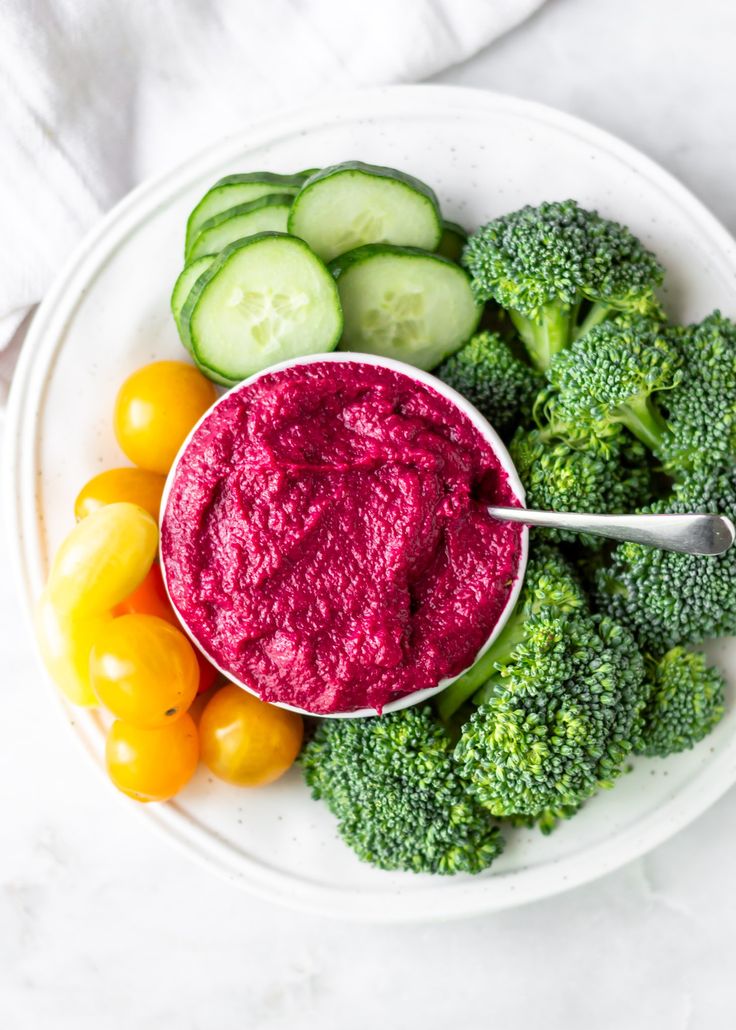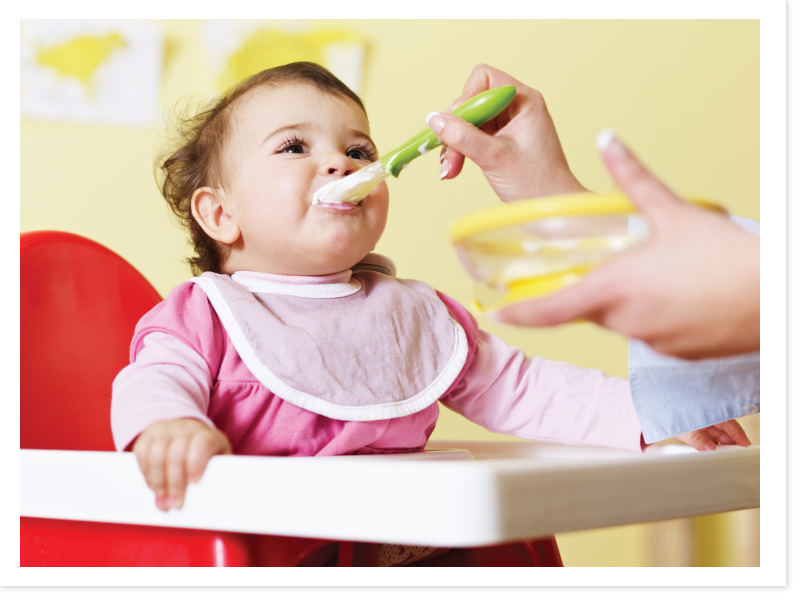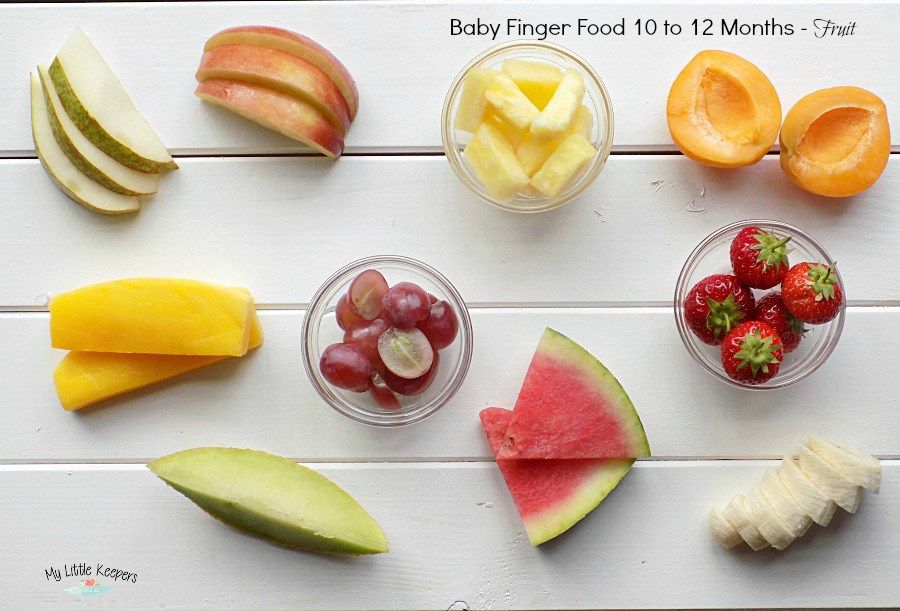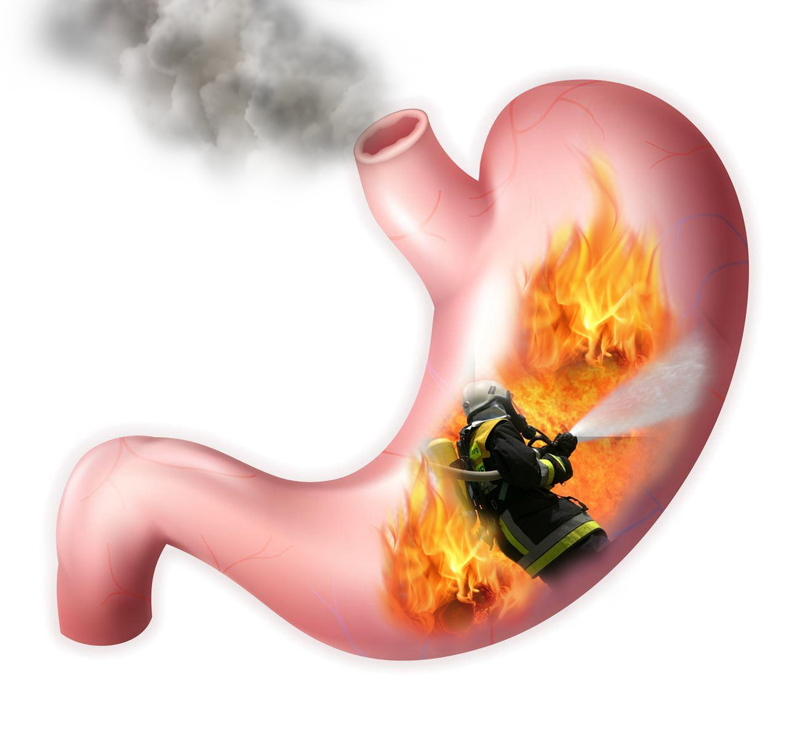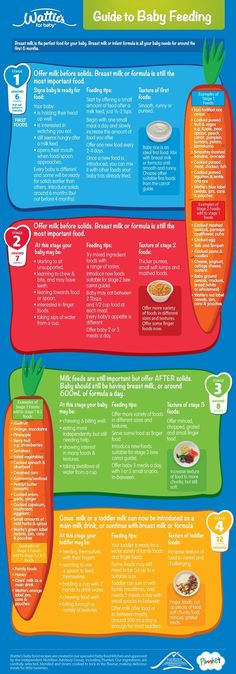How to feed a colicky baby
Feeding Tips, Diet, White Noise, and More
Written by WebMD Editorial Contributors
In this Article
- Feeding Tips
- Soothe Your Baby With Sound and Motion
- Calm Your Baby’s Senses
- What About Other Colic Remedies?
- Take a Break
Colic should go away by the time your baby is 4 months old. Until then, try these tips. They may give both of you some relief.
Feeding Tips
Is it the breastmilk or formula? Some parents worry that what they feed their baby or what they eat if they are breastfeeding can upset them. Generally it’s not a cause of colic, but it can cause irritation. If you think it might be the cause of your baby's crying, talk to their pediatrician. Mention any vitamin supplements or herbal remedies you are taking. You may even want to keep a diary of the foods you are eating that could be causing discomfort in your baby.
Help them swallow less air. Try a special bottle designed to reduce gas or a nipple with a smaller hole. Sit them up while they eat so they swallow less air. Remember to burp them during and after feedings.
Soothe Your Baby With Sound and Motion
Walk or rock. Motion helps calm babies. Walk around with your baby in a baby carrier (the kind you wear over your chest). The combined warmth and rhythm may lull them to sleep.
Hold and rock them or put them in a swing or stroller. The gentle movement may stop their tears.
If all else fails, secure them in their car seat and go for a ride. Just make sure you’re not so tired it’s unsafe to drive.
Use sound to calm your baby. Many babies respond well to the gentle hum of a machine, such as a:
- Clothes dryer (But don’t be tempted to put your baby on top of a dryer -- not even in a carrier or car seat -- because they could fall.
- Fan
- Vacuum
- White-noise from a machine or an app
You could also try classical music or a "heartbeat soundtrack" next to the crib.
Calm Your Baby’s Senses
Bright lights and sounds can overwhelm a colicky baby.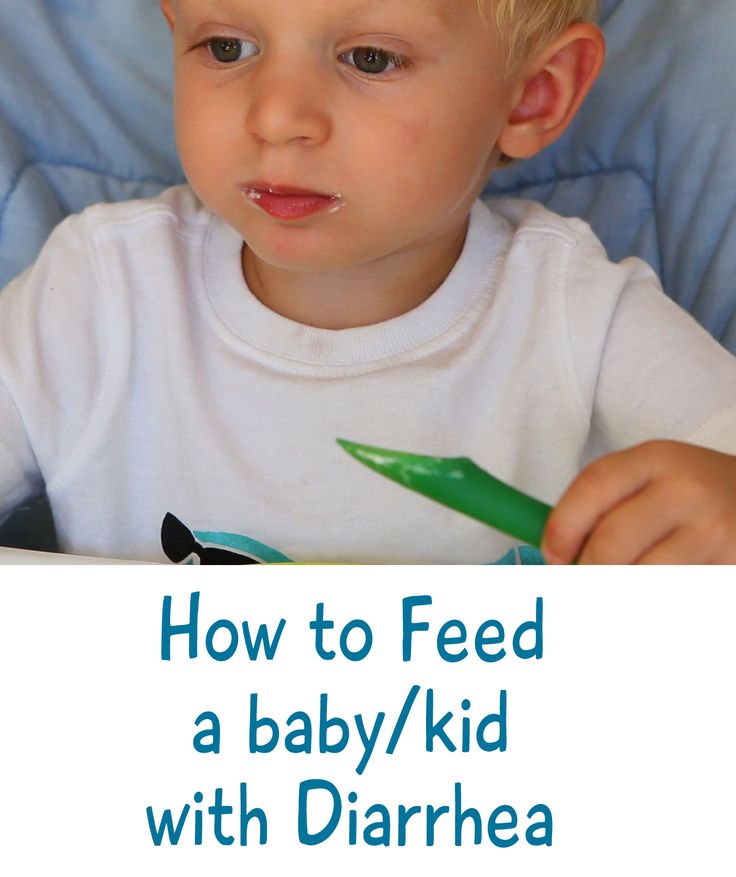 Your baby may calm down if you:
Your baby may calm down if you:
- Lay them on their back in a dark, quiet room.
- Swaddle them snugly in a blanket.
- Lay them across your lap and gently rub their back.
- Try infant massage.
- Put a warm water bottle on your baby's belly.
- Have them suck on a pacifier.
- Soak them in a warm bath.
What About Other Colic Remedies?
You may have heard that some home remedies can relieve colic. Most aren’t proven and they could hurt your baby. Always talk with your child’s pediatrician before trying something new. These are things you may have heard about.
- Rice cereal in a bottle. This is a definite no-no. It's a big choking hazard, and it is not proven to work.
- Herbal remedies such as chamomile, or gripe water. It’s best not to use these. The FDA doesn’t regulate over-the-counter remedies. You can’t be sure what they are made of, and ingredients aren’t always labeled. Some can have things in them that are very bad for your baby, like alcohol or opiates.
 Babies can also have allergic reactions to them. They’re also not proven to work.
Babies can also have allergic reactions to them. They’re also not proven to work. - Simethicone gas drops. These can be OK to try. But will they work? They may or may not help.
Take a Break
Colic isn't just hard on your baby. It can wear you out, too. When the pressure of trying to calm your crying baby gets to be too much, leave them with a sitter, family member, or trusted friend and get out of the house.
Even if you just go for a walk or grab lunch, take a break to relieve some stress. When no one is around to help, it's OK to leave your baby in the crib or playpen and go into another room briefly until you regroup.
No matter how frustrated you get, never hit or shake your baby. If you ever feel like you might hurt them, call your doctor right away and ask for help.
Also call your doctor if your baby:
- Has diarrhea, especially if you notice blood in it
- Doesn’t eat or gain weight
- Has a fever of 100.4 F or more
- Vomits
- Might be sick or injured
- Seems less alert or more sleepy than usual
Feeding Tips, Diet, White Noise, and More
Written by WebMD Editorial Contributors
In this Article
- Feeding Tips
- Soothe Your Baby With Sound and Motion
- Calm Your Baby’s Senses
- What About Other Colic Remedies?
- Take a Break
Colic should go away by the time your baby is 4 months old. Until then, try these tips. They may give both of you some relief.
Until then, try these tips. They may give both of you some relief.
Feeding Tips
Is it the breastmilk or formula? Some parents worry that what they feed their baby or what they eat if they are breastfeeding can upset them. Generally it’s not a cause of colic, but it can cause irritation. If you think it might be the cause of your baby's crying, talk to their pediatrician. Mention any vitamin supplements or herbal remedies you are taking. You may even want to keep a diary of the foods you are eating that could be causing discomfort in your baby.
Help them swallow less air. Try a special bottle designed to reduce gas or a nipple with a smaller hole. Sit them up while they eat so they swallow less air. Remember to burp them during and after feedings.
Soothe Your Baby With Sound and Motion
Walk or rock. Motion helps calm babies. Walk around with your baby in a baby carrier (the kind you wear over your chest). The combined warmth and rhythm may lull them to sleep.
Hold and rock them or put them in a swing or stroller. The gentle movement may stop their tears.
If all else fails, secure them in their car seat and go for a ride. Just make sure you’re not so tired it’s unsafe to drive.
Use sound to calm your baby. Many babies respond well to the gentle hum of a machine, such as a:
- Clothes dryer (But don’t be tempted to put your baby on top of a dryer -- not even in a carrier or car seat -- because they could fall.
- Fan
- Vacuum
- White-noise from a machine or an app
You could also try classical music or a "heartbeat soundtrack" next to the crib.
Calm Your Baby’s Senses
Bright lights and sounds can overwhelm a colicky baby. Your baby may calm down if you:
- Lay them on their back in a dark, quiet room.
- Swaddle them snugly in a blanket.
- Lay them across your lap and gently rub their back.
- Try infant massage.
- Put a warm water bottle on your baby's belly.

- Have them suck on a pacifier.
- Soak them in a warm bath.
What About Other Colic Remedies?
You may have heard that some home remedies can relieve colic. Most aren’t proven and they could hurt your baby. Always talk with your child’s pediatrician before trying something new. These are things you may have heard about.
- Rice cereal in a bottle. This is a definite no-no. It's a big choking hazard, and it is not proven to work.
- Herbal remedies such as chamomile, or gripe water. It’s best not to use these. The FDA doesn’t regulate over-the-counter remedies. You can’t be sure what they are made of, and ingredients aren’t always labeled. Some can have things in them that are very bad for your baby, like alcohol or opiates. Babies can also have allergic reactions to them. They’re also not proven to work.
- Simethicone gas drops. These can be OK to try. But will they work? They may or may not help.
Take a Break
Colic isn't just hard on your baby. It can wear you out, too. When the pressure of trying to calm your crying baby gets to be too much, leave them with a sitter, family member, or trusted friend and get out of the house.
It can wear you out, too. When the pressure of trying to calm your crying baby gets to be too much, leave them with a sitter, family member, or trusted friend and get out of the house.
Even if you just go for a walk or grab lunch, take a break to relieve some stress. When no one is around to help, it's OK to leave your baby in the crib or playpen and go into another room briefly until you regroup.
No matter how frustrated you get, never hit or shake your baby. If you ever feel like you might hurt them, call your doctor right away and ask for help.
Also call your doctor if your baby:
- Has diarrhea, especially if you notice blood in it
- Doesn’t eat or gain weight
- Has a fever of 100.4 F or more
- Vomits
- Might be sick or injured
- Seems less alert or more sleepy than usual
How to help a baby with colic
Shcherbakova Alla Anatolyevna
PhD, pediatrician, gastroenterologist
In the first months of life, the baby's digestive tract undergoes a number of changes, due to which colic may appear.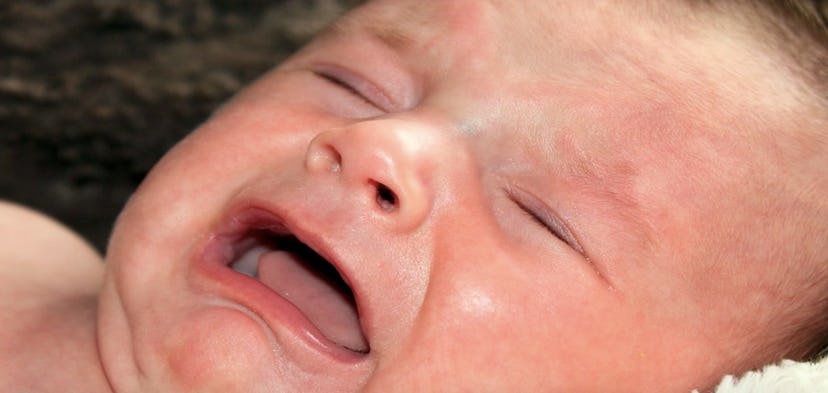 Pediatrician Alla Anatolyevna Shcherbakova tells in the article how to help the baby.
Pediatrician Alla Anatolyevna Shcherbakova tells in the article how to help the baby.
- Alla Anatolyevna, mothers are often worried about the issue of infantile colic. What is colic in a child and how do they manifest themselves?
— Colic is a behavioral disorder in a child associated with abdominal pain caused by gas formation in the large intestine during feeding. When a baby is born, his microbiotic status changes : conditionally pathogenic microorganisms in the child's intestines emit gases, and these gases, passing through the intestines, cause discomfort.
Usually, colic manifests itself as follows: the mother begins to feed the child, the baby eats, worries, throws the breast or bottle, cries, twists the legs or presses them to the stomach.
Is colic normal?
- Intestinal colic are considered normal and refer to the body's defense reaction - "physiological inflammation", which is formed in response to the transition from intrauterine to another food (mother's milk or milk formula).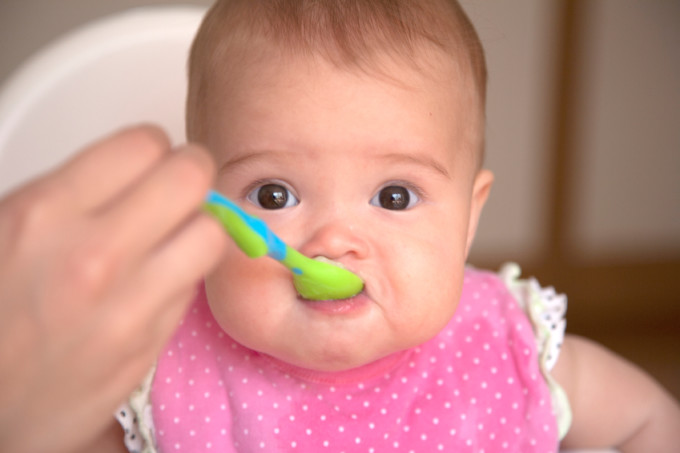
— When does colic begin in newborns, how long does it last, and when does it end?
- There are also babies who do not have colic at all. But most often the onset of colic occurs at two to six weeks of age. Colic usually lasts up to three months , however, there are children who experience colic up to six months. Although this is more the exception than the rule.
— How to understand that a child has colic, and how to distinguish intestinal colic from other causes of the baby's anxiety and crying?
- Answering this question can take a whole pediatric appointment. Colic most often occurs in the evening and is associated with feeding: that is, the baby began to eat and began to cry. Usually the attack lasts about three hours, the tummy can be round, swollen. If the baby is gaining weight and everything is fine with his general condition, then with one degree of probability or another we can say that everything is fine with him.
But it also happens that a child cries, for example, because of increased intracranial pressure or some problem with the digestive organs. Therefore, only a doctor at the time of admission can reliably determine the cause of the restless behavior of an infant.
Therefore, only a doctor at the time of admission can reliably determine the cause of the restless behavior of an infant.
In the process of training, doctors are given to listen to a recording of infant cries during colic, so that each specialist feels the unpleasantness of such a moment.
- When is colic more common - breastfeeding or formula-fed?
- It is difficult to unequivocally establish a direct relationship between the frequency of colic and the type of feeding. Considering that mother's milk is not sterile, and the composition of modern milk formulas promotes digestion, we can say that the likelihood of colic is about the same.
Causes of colic in a newborn
- If colic occurs equally often on breast and artificial feeding, what are the causes of their occurrence?
— There may be several reasons, the main ones are:
-
Transient lactase deficiency.
 Carbohydrate lactose is a necessary component of breast milk or infant formula, which is involved in the formation of the brain. For better digestion, an enzyme called lactase is needed. The first months of life is an important period of maturation of the child's body, and at this time the baby's pancreas produces an insufficient amount of lactase (or its low activity is noted). In turn, its deficiency leads to difficulties with the breakdown of lactose.
Carbohydrate lactose is a necessary component of breast milk or infant formula, which is involved in the formation of the brain. For better digestion, an enzyme called lactase is needed. The first months of life is an important period of maturation of the child's body, and at this time the baby's pancreas produces an insufficient amount of lactase (or its low activity is noted). In turn, its deficiency leads to difficulties with the breakdown of lactose. Thus, there is a transient lactase deficiency (that is, a temporary, transient deficiency of the enzyme), causing colic. There are different opinions about lactose-free mixtures, but lactose should not be excluded from the baby's diet, since this is not a panacea for colic, but lactase deficiency is a temporary and fleeting phenomenon.
-
When breastfeeding and mixed feeding, the cause of colic may be improper attachment of the baby to the breast. It often happens that mothers at the reception are asked to show how to properly attach the baby to the breast, how to feed him.
 We explain that mom needs to be relaxed, take a comfortable position and make sure that the baby is grabbing the nipple with the areola and not swallowing air. Children who suckle greedily are at especially high risk of colic: they can swallow the air that enters the intestines. There it "turns" into gas bubbles that cause colic.
We explain that mom needs to be relaxed, take a comfortable position and make sure that the baby is grabbing the nipple with the areola and not swallowing air. Children who suckle greedily are at especially high risk of colic: they can swallow the air that enters the intestines. There it "turns" into gas bubbles that cause colic. -
Improper bottle feeding can cause colic. All modern bottles are equipped with a valve that releases excess air. There are also anti-colic bottles with anatomically shaped nipples that mimic the shape of a female nipple. The comfortable and physiological grip of the nipple minimizes the likelihood of the child systematically swallowing air during feeding.
-
Improper nutrition of a nursing mother can also cause colic. Many researchers attribute colic in infants to food allergies. Many children are now born with a predisposition to food allergies. We tell mothers that the most common cause of food allergies in young children is cow's milk protein intolerance .
 That is, for a mother who is breastfeeding and who has a family history of food allergies, it is better to limit or completely exclude products containing cow's milk protein in her diet, since this causes food allergies in the child, and colic in such a case is a manifestation of food allergies.
That is, for a mother who is breastfeeding and who has a family history of food allergies, it is better to limit or completely exclude products containing cow's milk protein in her diet, since this causes food allergies in the child, and colic in such a case is a manifestation of food allergies. If we talk about non-dairy products in the mother's diet, then we can note the widespread opinion about legumes. In fact, legumes can affect the bloating of the mother, but if she tolerates such foods well, then she can eat pea soup and other dishes - this will not affect the baby's colic.
-
Wrong formula. Formula-fed infant nutrition helps correct colic. For example, cow's milk protein intolerance may be accompanied by colic . In this case, cow's milk formula will most likely need to be changed.
-
The psychological and physical climate plays an important role in the nutrition of the baby. The main thing is to provide the baby with a favorable environment during feeding, with direct contact between the nursing woman and the child.
 It is important that mom looks at the baby, and he looks at mom, and that nothing distracts them. When parents ask if a cat, loud noises, or bright lights can cause colic, the answer is of course not. However external bright stimuli can provoke colic : create a nervous environment around the baby and lead to aerophagia.
It is important that mom looks at the baby, and he looks at mom, and that nothing distracts them. When parents ask if a cat, loud noises, or bright lights can cause colic, the answer is of course not. However external bright stimuli can provoke colic : create a nervous environment around the baby and lead to aerophagia.
Aerophagia - swallowing large amounts of air during feeding.
How to help your baby with colic
— Please tell us about the correction of nutrition if the baby is breastfed.
— We talked about intolerance to cow's milk before. In general, the nutrition of a nursing mother should be varied, complete and sufficient. Mom does not need to eat for two, because she will quickly gain excess weight and have difficulty returning to normal after breastfeeding. At the same time, mom should not starve. Vegetables, fruits, berries, olive oil, meat, fish - the diet of a nursing mother should meet her daily needs. If an older child has a food allergy, you need to be careful about your diet when feeding the younger one: try a little food and observe the reaction of the baby.
If an older child has a food allergy, you need to be careful about your diet when feeding the younger one: try a little food and observe the reaction of the baby.
— What to do with colic with nutrition if the baby is on mixed or artificial feeding?
— When selecting infant formula, the doctor is guided by the examination, the condition of the child. The most important indicator of any mixture is compliance with the composition of mother's milk . Manufacturers introduce prebiotics and probiotics, iron, calcium, lutein and other ingredients into milk formulas in order to bring it as close as possible to the composition of breast milk.
Artificial feeding - when the baby eats only the mixture. Mixed feeding or supplementary feeding - when the mother does not have enough milk and partial nutrition is used (the baby is supplemented) with infant formula.
— Is it possible to give goat milk mixtures for colic?
It is impossible to determine in advance how a child will tolerate a given milk. Approximately 9% of children do not digest cow's milk but tolerate goat's milk well. With the help of the mixture, manufacturers are trying to make the child's digestion as easy as possible. But in order for the mixture to become an effective assistant, it must be selected with a doctor. Cope with Colic Can Digestion Comfort Blend on goat milk, which has a beneficial effect on the formation of soft stools, for example, MAMAKO ® Premium*. These are mixtures for feeding healthy children, which provide comfortable digestion and prevention of functional disorders of the gastrointestinal tract, including colic.
Approximately 9% of children do not digest cow's milk but tolerate goat's milk well. With the help of the mixture, manufacturers are trying to make the child's digestion as easy as possible. But in order for the mixture to become an effective assistant, it must be selected with a doctor. Cope with Colic Can Digestion Comfort Blend on goat milk, which has a beneficial effect on the formation of soft stools, for example, MAMAKO ® Premium*. These are mixtures for feeding healthy children, which provide comfortable digestion and prevention of functional disorders of the gastrointestinal tract, including colic.
- Are there any medicinal methods to combat colic?
- Sometimes mothers ask which pill to take so that the baby does not have colic, but such preparations do not yet exist .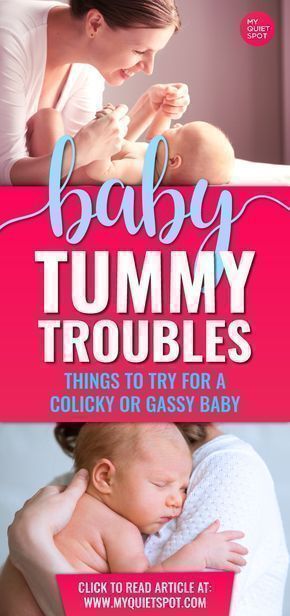 Currently, drug therapy includes prescribing drugs to children that make colic less pronounced - in fact, large bubbles of gas in the intestines turn into small ones, due to which swelling and pain in the baby's tummy disappear. The safety of preparations with probiotics has also been proven - they are able to reduce the severity and frequency of manifestations of infantile colic.
Currently, drug therapy includes prescribing drugs to children that make colic less pronounced - in fact, large bubbles of gas in the intestines turn into small ones, due to which swelling and pain in the baby's tummy disappear. The safety of preparations with probiotics has also been proven - they are able to reduce the severity and frequency of manifestations of infantile colic.
Is it possible to use traditional methods for colic?
- Some traditional methods are effective, while others are not recommended by doctors.
- Due to the immaturity of the digestive system, babies are prone to constipation. Using the gas tube , the mother causes defecation and gas to pass, and thus the child's condition improves.
- Contact with mother is important. If the baby has eaten, he is in a dry diaper, his mother takes him in her arms, walks around the room with him, hugs him to her - all this will help with colic. There is a so-called mom's gymnastics is an excellent remedy for colic, which is a daily ritual of every caring mother: she undresses, dresses, bathes the baby, strokes his tummy, legs, arms and back, makes a light acupressure around the navel.
 Pleasant touches help to soothe the baby and eliminate colic.
Pleasant touches help to soothe the baby and eliminate colic. - Russian mothers are very fond of giving dill water because their mothers and grandmothers used to do this. But dill water differs from breast milk in its physicochemical properties and osmolarity - and thus acts as an irritant, so it can provoke colic by itself.
Read also
- Allergy to cow's milk in a child: can it be cured, how to feed the baby and what should parents do.
— Does massage help with colic?
— In children during the first months of life, muscle tone predominates, so general strengthening massage is not indicated, and therapeutic massage is used only for certain reasons. But the frequent laying out of the baby on the tummy before feeding stimulates peristalsis, strengthens the anterior abdominal wall and reduces the risk of developing colic.
Prevention of colic in a newborn
— You told how to help with colic.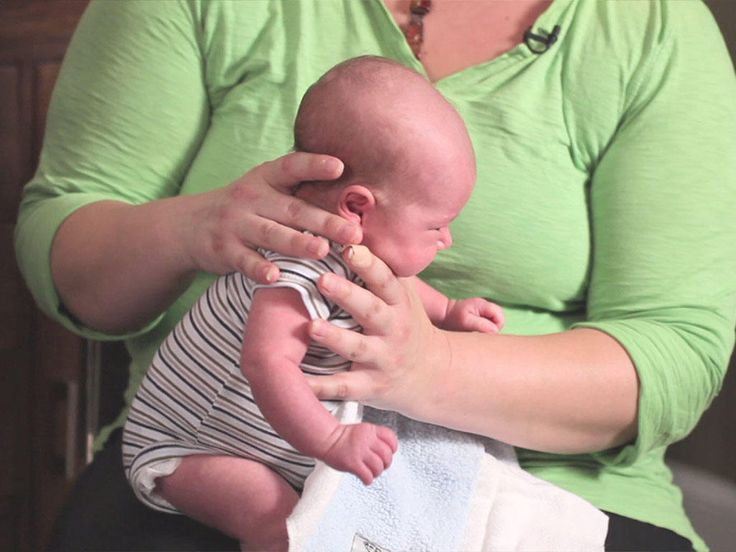 And how to prevent their occurrence, what serves as prevention?
And how to prevent their occurrence, what serves as prevention?
- There are several techniques to prevent this problem.
- To reduce the chance of colic, breastfeed properly . After feeding, the baby must be kept upright for some time, “column”, stroking the back - then the air will not go further into the digestive system and will not lead to colic.
- While breastfeeding, women often ask about coffee and sodas, legumes, seafood, grapes and sauerkraut, foods that can cause flatulence. If the mother tolerates such dishes well, then she can eat and drink them to satisfy her desire, but little by little. It will not affect the baby's colic in any way. But the emotional state is transmitted to the baby. A well-fed and satisfied mother is a happy child without colic!
- If the baby is an "artificial", then choose a bottle for him that has "anti-colic effect" , that is, it prevents him from swallowing air.
- If your baby has colic behave calmly , soothe and caress the baby.
 Distract him in any way possible, for example, talk to the baby, changing intonations, sing a lullaby, use a rattle or melodious bells, show spinning toys.
Distract him in any way possible, for example, talk to the baby, changing intonations, sing a lullaby, use a rattle or melodious bells, show spinning toys.
- Alla Anatolyevna, why are there no guarantees even if all the recommendations are followed?
— If a mother has slept well, eaten well, taken a walk with her child in the fresh air and armed herself with knowledge, then she calmly perceives the situation. For her, colic is a physiological and passing norm, which can be corrected by various available methods.
Doctor's recommendations help relieve colic and make it less frequent. And the best preventive complex is mother's hands and affection. You just need to get through this period!
Pain in the tummy and inconsolable crying of the baby are caused by various problems, including gastrointestinal problems. Discuss the child's restless condition with the doctor, as there are pathologies that can only appear to be colic. With attacks of colic, the main task is to calm the baby as much as possible using the available methods. But you should not give your child medications, herbal preparations or other sedatives without first consulting with the pediatrician. Almost all children go through a period of infantile colic, and, fortunately, they disappear with age as suddenly as they begin.
But you should not give your child medications, herbal preparations or other sedatives without first consulting with the pediatrician. Almost all children go through a period of infantile colic, and, fortunately, they disappear with age as suddenly as they begin.
* Breast milk is the best food for babies. WHO recommends exclusive breastfeeding for the first 6 months of a child's life and continued breastfeeding after complementary foods are introduced until the age of 2 years. Before introducing new products into the baby's diet, you should consult with a specialist. The material is for informational purposes and cannot replace the advice of a healthcare professional. For feeding children from birth. The product is certified.
#Tips for Mom #Baby digestion #colic #colic 0-6 #colic 7-12
See also
Composition of breast milk
#Tips for Mom #breast-feeding #pregnancy
Expert MAMACO ®
Adapted goat formula
#With goat milk #goat milk mixtures
Kizino Polina Alexandrovna
pediatrician, perinatal psychologist
How to feed a newborn so that he grows up healthy
#Tips for Mom #newborns
Zainiddinova Rabiyat Salahiddinovna
Candidate of Medical Sciences, Pediatrician, Neonatologist, Vaccine Prevention Specialist
See all
Composition of breast milk
# Tips for mom # breast-feeding # grudnoe-vskarmlivanie # pregnancy
Expert MAMACO ®
See all
Adapted goat formula
# With goat milk # mixtures with goat milk
Kizino Polina Alexandrovna
pediatrician, perinatal psychologist
How to feed a newborn so that he grows up healthy
# Tips for mom # newborns
Zainiddinova Rabiyat Salahiddinovna
Candidate of Medical Sciences, Pediatrician, Neonatologist, Vaccine Prevention Specialist
See all
View all
View all
View all
How to deal with colic: a picture guide
Make an appointment with a pediatrician
Determining whether it is colic is often not so easy - a baby can be worried and crying both from a wet diaper and a serious malaise. Therefore, if suddenly you cannot independently understand what is happening, how to be and where to run, make an appointment with a pediatrician and tell him about the symptoms. He will help you deal with the condition of the baby and, if necessary, determine the tactics of further behavior.
Therefore, if suddenly you cannot independently understand what is happening, how to be and where to run, make an appointment with a pediatrician and tell him about the symptoms. He will help you deal with the condition of the baby and, if necessary, determine the tactics of further behavior.
Calm down
If you find out that your baby has colic, first of all calm down and do not panic. Be guided by two postulates: it is not dangerous and it will pass. Yes, you now believe in it with difficulty, but it is true: colic lasts on average from several weeks to three months. Of course, now they seem like an eternity to you, but after a while they will seem to you as something very far away.
Review your diet
You've probably already been given this advice. However, we will add some specifics to it. First of all, remember that you don’t need to switch to a rigid diet of boiled chicken and buckwheat, because a nursing mother needs to eat as varied as possible (there are studies that suggest that an artificially narrowed diet of a nursing mother can provoke food intolerance to many foods in a child) . Most often, the baby reacts to cow's milk on the mother's menu. In addition to it, other “dangerous” foods include onions, garlic, hot spices, chocolate and sweet pastries, confectionery, citrus fruits and nuts, seafood and foods high in animal fats. According to a 2005 study by the American Association of Pediatricians, a hypoallergenic diet (no dairy, soy, peanuts, wheat, eggs) followed by a mother who breastfeeds a baby with colic reduces the absolute risk of seizures by 37 percent.
Most often, the baby reacts to cow's milk on the mother's menu. In addition to it, other “dangerous” foods include onions, garlic, hot spices, chocolate and sweet pastries, confectionery, citrus fruits and nuts, seafood and foods high in animal fats. According to a 2005 study by the American Association of Pediatricians, a hypoallergenic diet (no dairy, soy, peanuts, wheat, eggs) followed by a mother who breastfeeds a baby with colic reduces the absolute risk of seizures by 37 percent.
The transition to an "anti-colic" diet should be started after consultation with the pediatrician. It will be good if a nursing mother can keep a diary of colic for several days and see how the baby reacts if she eats certain foods. Having outlined the circle of "suspects", there are two ways to proceed:
● if the child has really severe colic attacks, eliminate all inappropriate foods from the diet (in addition to those listed above, these include drinks with a high content of caffeine, carbonated lemonades, grapes, sausages, pickles, canned food, spicy and too sweet foods) for 10-14 days, then gradually return one product at a time and carefully monitor the child's reaction;
● If the colic attacks are episodic and/or do not last long, you can refuse one "suspicious" product after another and observe. As soon as the main causative agent of the child's calmness is found, the rest of the products can be returned one at a time.
As soon as the main causative agent of the child's calmness is found, the rest of the products can be returned one at a time.
Artificial feeding also causes colic. In the event of seizures, it is necessary to discuss with the doctor the issue of changing the mixture - most likely, you will be recommended to transfer the baby to mixtures of the “comfort” category.
Swing
Babies need close contact with adults. Especially babies with colic. It is clear that you now also need to be rocked. But the child needs it. Of course, there will be no magical effect, but the baby will receive affection and warmth, which are so necessary for him in this state, as well as calm down and distract from stress.
Lay on the tummy
Lying on the stomach helps if you understand that the child has a lot of gas in the intestines. Pressed against a flat surface under the influence of all-powerful gravity, the baby will most likely finally spit (for best results, bend his legs at the knees and put him under the tummy) - and this will definitely bring him at least partial relief.
Warm up
Everyone knows about the warm diaper method. You can heat it up with an iron (be careful not to overdo it!) or with a hot water bottle. Under the influence of heat, the child will relax a little, which means that he will give his tense body a little rest. The warmth of the baby can also be provided in the bath - you can lie in the water of a pleasant temperature together, thus providing the child with just a royal service to combat colic - he will have skin-to-skin contact, and water physiotherapy, and relaxation.
Scolding
This is almost the same as rocking, only you don't have to hold the baby in a more or less static position. Carry him on the handles in a column, belly on your forearm, or press the baby to you so that his tummy touches your chest, and the crown of his chin. You can perform the "dance of colic": gently lift the baby up and down, left and right and back and forth. Rhythm, as well as the feeling of your breathing and the sound of the parent's beating heart, will help to calm down.
Massage
Massage techniques for colic can be taught to you by your health visitor or pediatrician. If you wear it for a firming massage at a special center, ask the staff to show you a couple of tricks that you can do yourself for colic attacks. The simplest of them are stroking the tummy with light (lightest!) pressure, as well as a simple “bicycle” with legs. Both methods are good for getting rid of excess gases in the infant intestines.
Take a ride in a car
One of the most modern ways to fight colic. Many children cannot calm down either during motion sickness, or after a massage, or in a warm bath. But on the other hand, they subside soon after they are loaded into the infant carrier and begin to ride in a car. It is best to do this trick with the second parent of the baby, so that one looks after him, and the second can concentrate on driving.
Swaddle
Swaddling is no longer a mandatory part of the baby care program.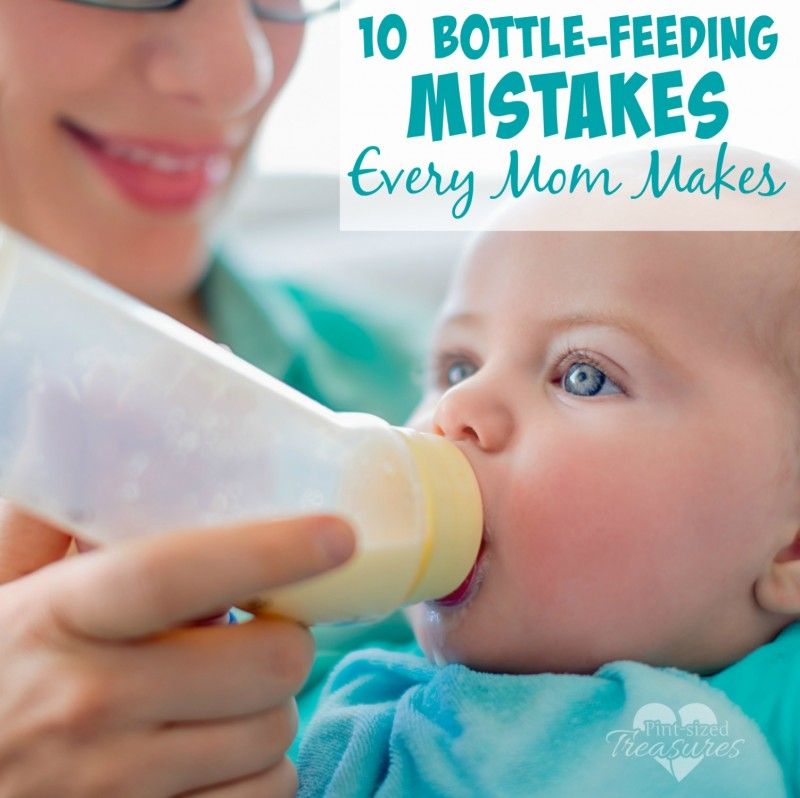 Moreover, tight swaddling is recognized as dangerous for children's joints. However, soft, gentle swaddling with the help of special fabric cocoons with Velcro or zippered bags can work wonders. A child, during pregnancy, accustomed to the natural tightness of the womb, getting into a comfortable diaper, receives a portion of sensations similar to those that he experienced in his mother's stomach. And what could be better than being in your mother's belly (he doesn't know that you replaced it with tissue) when you feel bad?
Moreover, tight swaddling is recognized as dangerous for children's joints. However, soft, gentle swaddling with the help of special fabric cocoons with Velcro or zippered bags can work wonders. A child, during pregnancy, accustomed to the natural tightness of the womb, getting into a comfortable diaper, receives a portion of sensations similar to those that he experienced in his mother's stomach. And what could be better than being in your mother's belly (he doesn't know that you replaced it with tissue) when you feel bad?
Enable white noise
White noise is also a back-to-the-womb hack. While the child is inside the mother, he does not hear the world the way we hear it - the sound has to overcome not only the barrier from the internal and external organs, but also the amniotic fluid in which the baby is located. Cover your ears with your palms and listen to the world - this is how the fetus hears what is happening outside. Therefore, white noise helps him to find himself again, as if in a familiar environment, to relieve sensory fatigue, because it is also part of colic.

